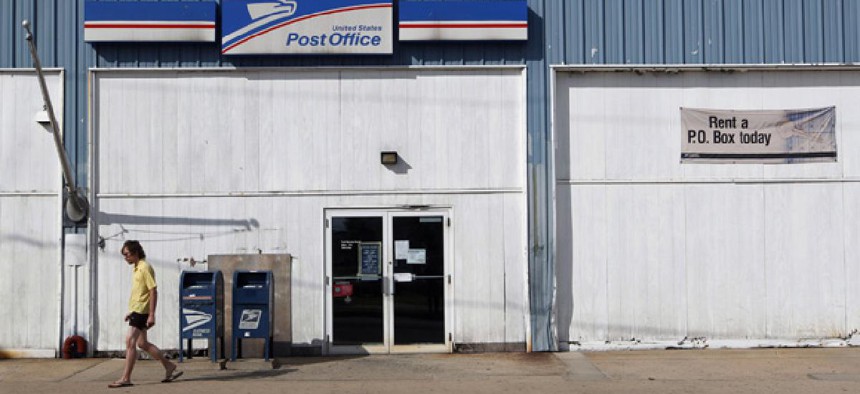
Mel Evans/AP
Postal Service revises schedule for facility consolidations
USPS will begin phase-in approach with 48 closures this summer.
In its second change of course this month, the U.S. Postal Service revised its strategy for consolidating facilities, incorporating a slower, more incremental approach than previously planned.
USPS announced a new strategy Thursday that phases in postal facility consolidations over two years. The agency will pursue consolidations in 140 locations by the spring of 2013 -- a move it hopes will bring $1.2 billion in savings annually. Phase 2 of the new plan, slated to be completed by the spring of 2014, will involve streamlining an additional 89 locations for a total of $2.1 billion in savings annually, USPS officials said.
“To return to long-term profitability and financial stability while keeping mail affordable, we must match our network to the anticipated workload,” Postmaster General Patrick Donahoe said Thursday. “Our current plan meets our cost reduction goals, ensures seamless and excellent service performance throughout the implementation period, and provides adequate time for our customers to adapt to our network changes.”
The new plan will reduce the size of the USPS workforce by about 13,000 employees. The agency emphasized its commitment to avoiding layoffs and providing options for remaining within the Postal Service to employees at downsized plants.
The agency had proposed consolidating 150 facilities in 2012 and 114 locations in 2013. Earlier this month officials announced a plan allowing USPS to avoid closing rural post offices, and mentioned the agency would offer a $20,000 early-out incentive for full-time career postmasters and give some employees the option of working reduced hours. About 158,000 postal employees are currently eligible for retirement.
As part of the strategy unveiled Thursday, USPS also will issue a new rule in the Federal Register modifying service standards for overnight delivery that by 2014 would “initially shrink the geographic reach of overnight service to local areas and enable consolidation activity in 2013,” USPS said in a statement Thursday. The service will be able to maintain most local next-day delivery through 2013.
The Postal Service will begin Phase 1 this summer at 48 locations, but will suspend consolidations between September and December to accommodate election volume.
“We will never stop looking for opportunities to optimize our network,” USPS Chief Operating Officer Megan Brennan told reporters Thursday. “[The new plan] stretches the time frame and gives customers time to plan and adapt.”
“Consolidations” do not necessarily mean closures, Brennan told reporters. The agency says consolidations “mostly involve transferring mail-processing operations from smaller to larger facilities.”
About 5,000 employees affected by the consolidations will be notified next week.
The second phase of the strategy -- 89 additional consolidations beginning in February 2014 -- is conditional upon “the circumstances of the Postal Service,” USPS officials said. The agency still is waiting on legislators to help it sort out its financial woes. One plan would relieve some of the burden of the agency’s obligations to prepay retiree health benefits. Proponents of the Senate bill argue that fixing this should be the primary focus -- not closures and consolidations.
“Today’s proposal does not address the Postal Service’s two upcoming payments of $5.5 billion for its future retiree health care fund, its past overpayments of $11 billion into the Federal Employees Retirement System, or the need to significantly downsize the postal workforce,” Sen. Tom Carper, D-Del., co-sponsor of the Senate bill, said in a statement Thursday. “Only comprehensive, long-term reform of the Postal Service can address these . . . and that reform can only come from Congress.”
The House has yet to take up its key postal reform proposal, which advocates deeper cuts, consolidations and closures.
The National Association of Letter Carriers used Thursday’s announcement to continue to press USPS and lawmakers for a reform plan that would help alleviate the prefunding requirement.
“Since $3.1 billion of the reported $3.2 billion loss in the most recent fiscal quarter stems from prefunding future retiree health benefits . . . the USPS and congressional response ought to address the actual problem,” NALC President Fredric Rolando said in a statement. “Dismantling the network and reducing services to Americans and their businesses is not a business plan.”
CORRECTION: The original version of this story misstated the amount USPS overpaid into the Federal Employees Retirement System.
NEXT STORY: Panel advances military pay raise






